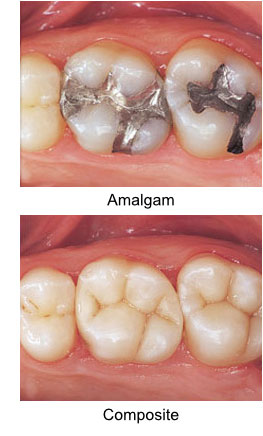Fillings
> Dental Services
> Dental Services
A filling restores a damaged tooth back to its normal function and shape, and prevents further decay by eliminating areas of the tooth where bacteria can enter. There are a number of factors to consider when choosing which type of filling material is best for you; including the extent of the repair, any allergies you may have to certain dental materials, location of the filling and cost.
Composite resin fillings are made from a mixture of plastic and fine glass particles and matches the color of the tooth. They are generally used on front teeth or the visible parts of the teeth because they are more aesthetic than silver fillings. Direct composite fillings are generally used for routine cavities, closing small spaces between your front teeth and repairing notches that can develop at the gum line area of a tooth. Unlike silver fillings, you can chew on a composite filling the same day that it is placed. Although composites are less wear resistant than amalgam, they can last for many years.
Amalgam fillings are made from a mixture of metals including mercury and silver and don’t match the color of your teeth. It is typically used for fillings in the back teeth. These fillings are very strong and can last at least ten years if not longer.
Gold fillings are made from gold alloy which is extremely durable. Gold fillings do not match the natural color of your teeth and cost six to ten times more than amalgam, but lasts longer than any other type.
Ceramic fillings are made of porcelain and look natural because they are tooth colored. They are more brittle than composite resin so can break more easily but are also more resistant to staining. One con is that ceramic fillings are expensive, costing as much or more than gold fillings.
Glass Ionomer fillings are made from acrylic and a component of glass - fluoroaluminosilicate. It is very strong and is most often used in people with extensive decay in the part of the tooth that extends below the gum.
Laboratory (Indirect) Processed Restorations are made in a dental lab from an impression taken of the prepared tooth. They are made for teeth needing a larger filling. These provide the additional strength and durability that a basic composite or amalgam filling can not provide. These can be tooth colored, gold or silver colored.

